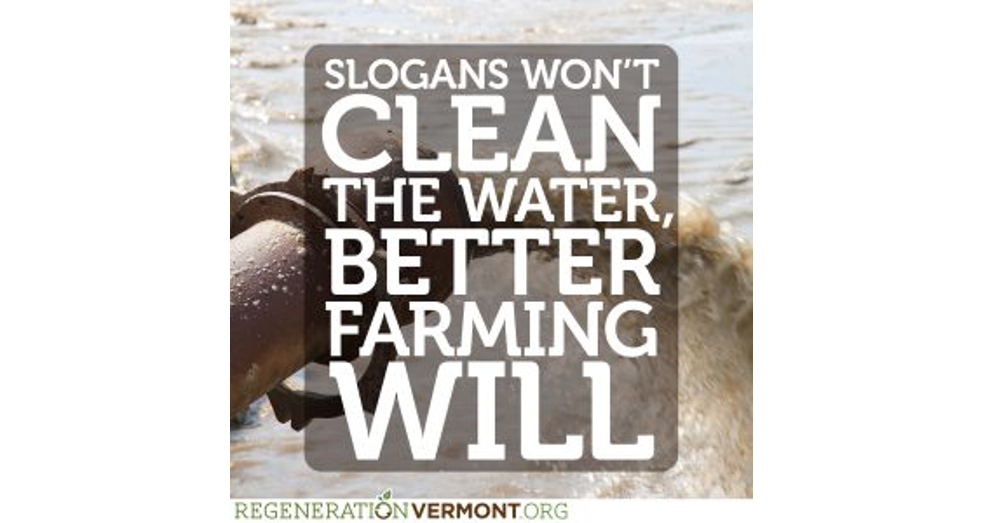
Slogans Won’t Clean the Water, Better Farming Will
The State of Vermont is on the verge of implementing “Phase One” of its plan to clean up Lake Champlain and the dozens of other impaired waterways throughout the state. In some of the most polluted areas – Missisquoi Bay, for example – the byproducts and techniques currently used by industrial dairy farmers are responsible for nearly 80% of the problem. Statewide, it’s estimated that nearly half of Vermont’s water woes are caused by these commodity-based dairies.
August 28, 2017 | Source: Regeneration Vermont | by Michael Colby
The State of Vermont is on the verge of implementing “Phase One” of its plan to clean up Lake Champlain and the dozens of other impaired waterways throughout the state. In some of the most polluted areas – Missisquoi Bay, for example – the byproducts and techniques currently used by industrial dairy farmers are responsible for nearly 80% of the problem. Statewide, it’s estimated that nearly half of Vermont’s water woes are caused by these commodity-based dairies.
So you’d think Phase One of a plan to clean up these waterways would put an equal amount of emphasis on addressing the obvious causes, the ways of the industrial dairy farm: animal confinement and overcrowding, annual tillage of corn crops, fields left fallow and open through the winter and spring, and toxic fertilizers and pesticides. But you’d be wrong.
In the end, Phase One is little more than what the state has been doing for decades: throwing slogans at it. “Clean & Clear!” they shouted for years, before the EPA came in and called their bluff. And now they’ve got the Clean Water Act and the Clean Water Fund and a big old Phase One of just more of the same, letting large dairy farmers off the hook and counting on the debunked method of dilution as the solution to pollution.
Certain parts of Lake Champlain are literally choking from the cyanobacteria, filled with phosphorus and nitrogen-rich farm runoff, and in serious danger of becoming dead zones. But Phase One trumpets an “assimilation” plan that allows the runoff to continue – only in, hopefully, smaller amounts.
And when will we see results from this strategy of a little less pollution over a whole lot of time? “It is reasonable to assume,” the EPA writes in a response to a comment submitted about the plan, “that it will be, at a minimum, 10-15 years before changes should be expected to be seen in the lake…[but]…the full time-frame could easily be 30 years or more for Missisquoi Bay.”
Instead of really putting the clamp down on the confined animal feeding operations (CAFOs) and the other large dairies that are causing the water problems, the mantra of Phase One is “All In,” as in: it’s everybody’s problem now and we all need to start cleaning up. But this “all in” slogan would be more believable, not to mention persuasive, if there was first a plan to curtail the manure, fertilizer and pesticide issues that have caused the problem up until now. Sure, let’s be “all in,” but first we’ve got to get industrial, nonorganic dairying “all out.”
